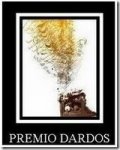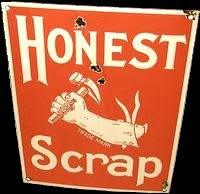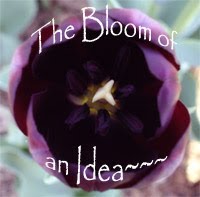
No. Not the Dalai Lama. Not even a someone actually. A something. A very important something if you're a writer.
Honest.
But speaking of the Dalai Lama, he did say, "Happiness is not something ready made. It comes from your own actions."
And couldn't the same thing be said of the novels we write?
What was that bit of dialogue between Alice and the Mad Hatter?
Alice : "I've had nothing yet. So I can't take any more."
Hatter : "You mean you can't take any less. It's very easy to take more than nothing."
And isn't that what our novels start out as? Nothing. Then along strolls a colorful character, an intriguing situation blossoms in our thoughts, or a bit of zingy dialogue crackles in our mind's ear.
But what do you do with those isolated bits?
Ah, that's where the Dali-Rama comes into play as we shift to another bit of back-and-forth in the adventures of Alice.
"Which road do I take?," asked Alice.
"Where do you want to go?," replied the Cheshire Cat.
"I don't know."
"Then," smiled the cat, "it really doesn't matter."
But it does matter when you write a novel. You have to know where you are going if you're going to take the reader there. We need a compass. More importantly, we need a map.
We need the Dali-Rama.
And its motto is a twist to one of the sayings of the artist who gave birth to it : Salvador Dali -- Intelligence without direction is a bird without wings. As authors, we paint our novels. To paint well we need a canvas. Yes, you guessed it : the Dali-Rama.
How many times have you stared at a blank page in agony? Buy some 3 X 5 index cards. Write your characters on one, your bits of dialogue on another, your large, compelling situation on a larger one.
The great thing about those index cards is that you can fit them into your purse {or me into my backpack (what Sandra, my best friend, calls my "Man-Purse")}. And whenever an idea for dialogue, plot, scene re-do, or character development hits you, you scribble it down upon your stash of ready index cards.
Now, buy a cork board. Me, I take construction paper and tape it over the board. I get markers in different colors. And then, I'm ready to paint myself a novel.
This is not a story board. That directors do AFTER the script is written. We're more like detectives sleuthing a murder case. All those bits of characters, dialogue, situations, plot twists. We pin them up on the board in haphazard fashion. No rhyme, no reason but our subconscious.
Then, step back. Look at the surrealistic pattern you've made. Start arranging patterns in the chaos. Draw lines on your Dali-Rama connecting your different characters along paths of love, blood, hate, and circumstance. Scribble questions next to each one : "What drives him to strive for perfection? What shaped her into a lusty gossip? Why would anyone do {fill in the blank.} Why a bank job and not a jewel heist? What skills does a cat burglar have? How would one go about obtaining those skills and knowledge?
From the answers to those or other similar questions are born more scribbled index cards.
By now, your muse will be churning. You will see how one character fits into another in ways you hadn't even thought of when you started. You see where you can flip this situation on its ear, blending it into laughter, suspense, or tears.
Like Dali himself, don't let structure bind you to convention. Look at the overall "feel" and "look" of the Dali-Rama. Remember the soft, melting pocket watch in Dali's famous "Persistence of Memory?" It whispered that time is not hard as we thought. In fact, time is often irrelevant. Think of the time spent in a dentist's chair during a root canal. Time changes according to circumstance. And so should the parameters of your novel.
There is another beautiful thing about the Dali-Rama. It postpones the actual writing of the novel. And who of us has not hesitated and hesitated before a daunting new novel? Now, you have an intelligent-sounding reason for procrastinating!
And I'm only being slightly humorous. I've had friends make actual pieces of art of their Dali-Rama's. They pasted frilled paths, colorful twists, only to phone me in wonder that suddenly as they looked at it, the novel just jelled into something fantastic and unexpected. They couldn't wait to get started on this awesome surprise of a novel that had just occurred to them.
And because of the Dali-Rama, they knew exactly where they were going, scene by scene, plot twist by plot-twist onto a climax to which they couldn't wait to take the reader. Trust me. If you follow the Dali-Rama, it will not fail you.
Surprise you, yes. Absorb you, yes. Fail you, no.
And to present the other side of the story, you should read the guest post of published author, Brendan Halpin, on the delightful blog, THE BOOK PIXIE. Link : http://thebookpixie.blogspot.com/ I'll summarize it : almost all writing advice is complete crap. Read his post. You'll enjoy it. I did. He was wrong about my advise though. Snicker.
*****************************************************
Now, on June 18th a movie debuts that may get agents thinking along the lines of the supernatural merged with the western. {I can only hope.}


























































































































































































The Dali-Rama sounds like the perfect procrastination tool, even better than washing the dishes or staring at my tulips because it will at least make my husband and my critique group think I'm working on my book. Clever post. :)
ReplyDeleteVery interesting post and blog. Thanks for visiting me today. Come back often.
ReplyDelete"Happiness is not something ready made. It comes from your own actions."
ReplyDeleteI love the quote. But I have to say that I can't write with all of that stuff. Each writer has their own methods and many successful writers are pansters. Stephen King, for one.
Dali-Rama! Love it! I've read of similar tools. Unfortunately I simply do not have the space to create something like this. But I have my methods that work for me.
ReplyDeleteWhenever I get blocked on a story I always do something sort of like this. With art and colored pens/pencils, post it notes of rainbow colors. It helps the left brain (or right I forget which) put everything b ack together.
ReplyDeleteGreat post Roland.
Good tips.
ReplyDeleteAnd don't let your wife call it a purse - you'll lose man points!
I'm using notecards for the drama I'm writing. It's great. I can jot down dialogue and scene ideas in an instant, and they're easy to carry around.
ReplyDeleteGreat ideas, Roland! I love how you've used quotes and funny bits to express the ideas, and how well you've painted the writing process. This is such a useful post!
ReplyDeleteOops, Roland, how did I miss this post. Sorry! And what an interesting post it is, really to the writer's embryonic heart. When I get stuck on points outside notes, I walk. Just walk and don't think so I can think. Love your quotes!!
ReplyDeleteI'm so stuck right now with my writing that I am tempted to try this! I've heard of the technique before, but I like how you linked it with Dali.
ReplyDeleteAnd I love your banner picture! Glad to have discovered this blog.
I use post-it-notes. Tons of them.
ReplyDeleteMy Dali-Rama is not so elaborate; I don't have the space for it. But this is essentially what I do while writing my novel.
ReplyDeleteI piece it together. I don't mind writing a scene as it comes to me, then working towards a bridge several pages or even several chapters ahead. I write myself notes in different colored text. I wrote a character profile in the middle of an action scene once because I needed the motivation but didn't want to put it in another document.
But I tell you true; once I have my own house, and some space of my own I don't have to share, I'm finding the biggest cork board there is and putting this into effect.
I'm not a plotter; but for some reason, this method appeals to me.
Thanks Roland.
......dhole
Hi Roland .. the Dali picture is superb - love it.
ReplyDeleteYour ideas are creative to say the least - and could be applied to blogs too .. Thanks - Hilary
Great post! I LOVE Dali's work--have several posters hanging in my office...yup.
ReplyDeleteHmmm, will have to consider the Dali-Rama approach--sounds like fun. Work intensive and a bit chaotic, but fun! :D
I suppose there's something intriguing and mesmerizing about chaos that draws us to it. Dangerous, but it could spark creativity.
Interesting way of thinking about plotting. I may have to try it for my next one!
ReplyDelete